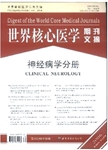蛋白脂质蛋白1基因点突变导致复杂性痉挛性截瘫2的1例病例报道
A case of complicated spastic paraplegia 2 due to a point mutation in the proteolipid protein 1 gene作者机构:Department of Pediatrics Alfred I. DuPont Hosp. for Children Ne mours Children’s Clinic 19899 Wilmington DE United States
出 版 物:《世界核心医学期刊文摘(神经病学分册)》 (Digest of the World Core Medical Journals:Clinical Neurology)
年 卷 期:2005年第1卷第2期
页 面:48-49页
学科分类:1002[医学-临床医学] 100204[医学-神经病学] 10[医学]
主 题:蛋白脂质蛋白 痉挛性截瘫 基因点突变 小脑共济失调 肌张力障碍 精神运动性 髓鞘形成 疾病严重程度 胞外结构域 眼球震颤
摘 要:Pelizaeus Merzbacher disease (PMD) is a rare X linked dysmyelinating disorde r resulting from mutation of the proteolipid protein gene (PLP1). Clinical featu res of PMD include progressive psychomotor developmental delay, nystagmus, spast ic quadriplegia, dystonia, and cerebellar ataxia. PMD is clinically classified i nto three subtypes according to the severity of the disease: connatal, transitio nal, and classic forms. Patients with PMD have been identified with duplication, point mutations, and deletion of PLP1. In addition, spastic paraplegia 2 (SPG2) is allelic to PMD and typically caused by missense mutations in the second extr acellular domain of PLP1 or in the PLP1 specific region that is spliced out dur ing formation of the DM20 isoform. The authors describe a Korean boy diagnosed w ith SPG2 caused by a mutation that results in a Pro215Leu substitution in the se cond extracellular domain. Analysis of phenotypes resulting from mutations affec ting PLP1 has been valuable in identifying functional domains of this still inco mpletely understood major myelin protein. Null mutations and mutations affecting the PLP1 specific domain cause peripheral neuropathy. The PLP1 specific domai n also is important in the long term maintenance of axonal integrity. This pati ents phenotype was relatively mild, in contrast with other mutations at positi on 215 of PLP1 that cause severe PMD. One of these severe mutations is also a mi ssense mutation substituting an aliphatic residue, alanine, for proline. The dis tinct severity difference between the Pro215Leu and Pro215Ala substitutions sugg ests that this region of the protein is very sensitive to subtle structural chan ges and likely plays a critical role in PLP1 function.



